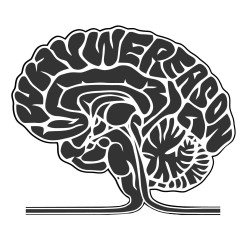Friend or Foe in Twenty Seconds: New Research Examines Accuracy of Snap-Judgments
The early 2000s saw a handful of great books on intuition. Timothy Wilson’s Strangers to Ourselves nicely illustrated how most cognition occurs at the unconscious-intuitive level and Gary Klein’s Sources of Power described the mastery of expert intuition. Their work gave way to the more fan-friendly Blink, Malcolm Gladwell’s take on the “power of thinking without thinking,” which illuminated the effectiveness of going with your gut to the public eye. What came out of these books is the idea that brains can do a lot with a little. Sometimes it only requires a few seconds (less in some cases) to size up an environment and make an accurate judgment.
My favorite example comes from an experiment ran in 1993 by psychologists Nalini Ambady and Robert Rosenthal. In it, they showed participants three silent 10-second video clips of professors and asked the participants to evaluate the effectiveness of the professors. Ambady and Rosenthal found that the ratings of the participants were nearly identical with those of students who had been taught by the same professor for a semester. They found the same results even after cutting the clips down to two seconds; a silent two-second video clip was all the participants needed in order to accurately judge the effectiveness of a professor.
That was 1993. A lot more has happened since then. One researcher who has done a lot of work on snap-judgments is Alex Todorov, professor of psychology at Princeton. Like Ambady and Rosenthal’s study, Todorov’s work focuses on face recognition. Specifically, he studies the biological roots of rapid judgements by understanding how human beings determine if a stranger is friend or foe. In one experiment, Todorov showed pictures of men’s faces and asked participants to rate them on several attributes such as likability and competence. He found that participants mostly agreed with each other over how likable or competent the men in the photos looked. But there was a twist to his study. The faces were actually campaign portraits of politicians competing for elective office. And when Todorov compared the competence ratings as judged by the Princeton students to the results of the elections he found that, “in about 70 percent of the races for senator, congressman, and governor, the election winner was the candidate whose face had earned a higher rating of competence.”
There is much more to Todorov’s work. I’ll leave it up to Daniel Kahneman, who nicely sums it up in Thinking, Fast and Slow: “[Todorov] showed that we are endowed with an ability to evaluate, in a single glance at a stranger’s face, two potentially crucial facts about that person: how dominant (and therefore potentially threatening) he is, and how trustworthy he is, whether his intentions are more likely to be friendly or hostile… the accuracy of face reading is far from perfect: round chins are not a reliable indicator of meekness, and smiles can (to some extent) be faked. Still, even an imperfect ability to assess strangers confers to survival advantage.”
And this brings me to a new study out of the University of California Berkeley lead by Aleksandr Kogan. Kogan and his team gathered two dozen couples and asked them to speak about moments when they suffered. They filmed only the partners as they listened, and showed silent 20-second clips to strangers who rated how trustworthy, kind or compassionate they seemed. The researchers also took DNA samples of the couples focusing on an oxytocin receptor gene known as the GG genotype, which is found in individuals who show especially strong signs of trust, morality, empathy and love. They found that “the listeners who got the highest ratings for empathy… possess a particular variation of the oxytocin receptor gene known as the GG genotype.” This means, in Kogan’s words, “that the people who had two copies of the G version displayed more trustworthy behaviors – more head nods, more eye contact, more smiling, more open body posture. And it was these behaviors that signaled kindness to the strangers.”
To be sure, people who are especially empathic and trustworthy have both nature and nurture to thank; no one gene does the trick, as Kogan makes clear. But his sample size was fairly small – just over twenty participants – so the implications and true meaning of his findings remain unclear. For now though, the work nicely complements previous studies that examine our ability to accurately judge others with limited exposure.

